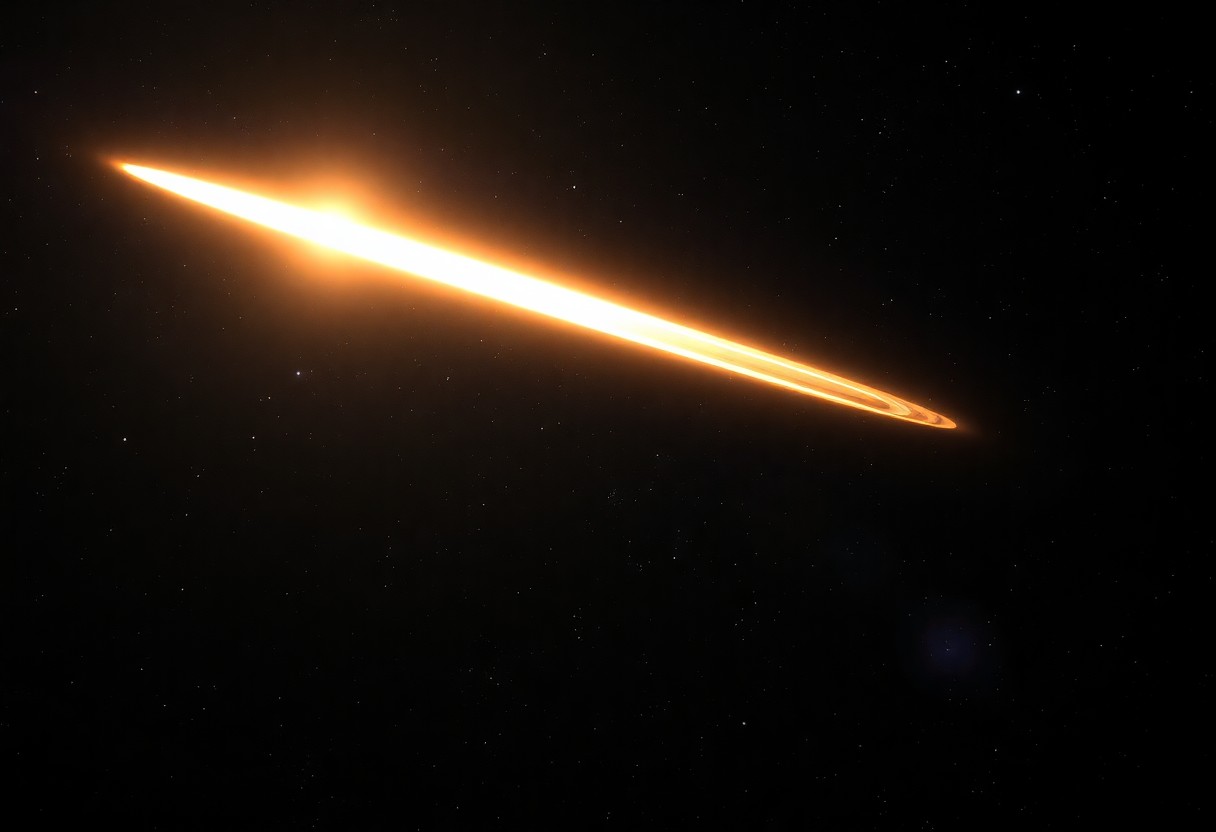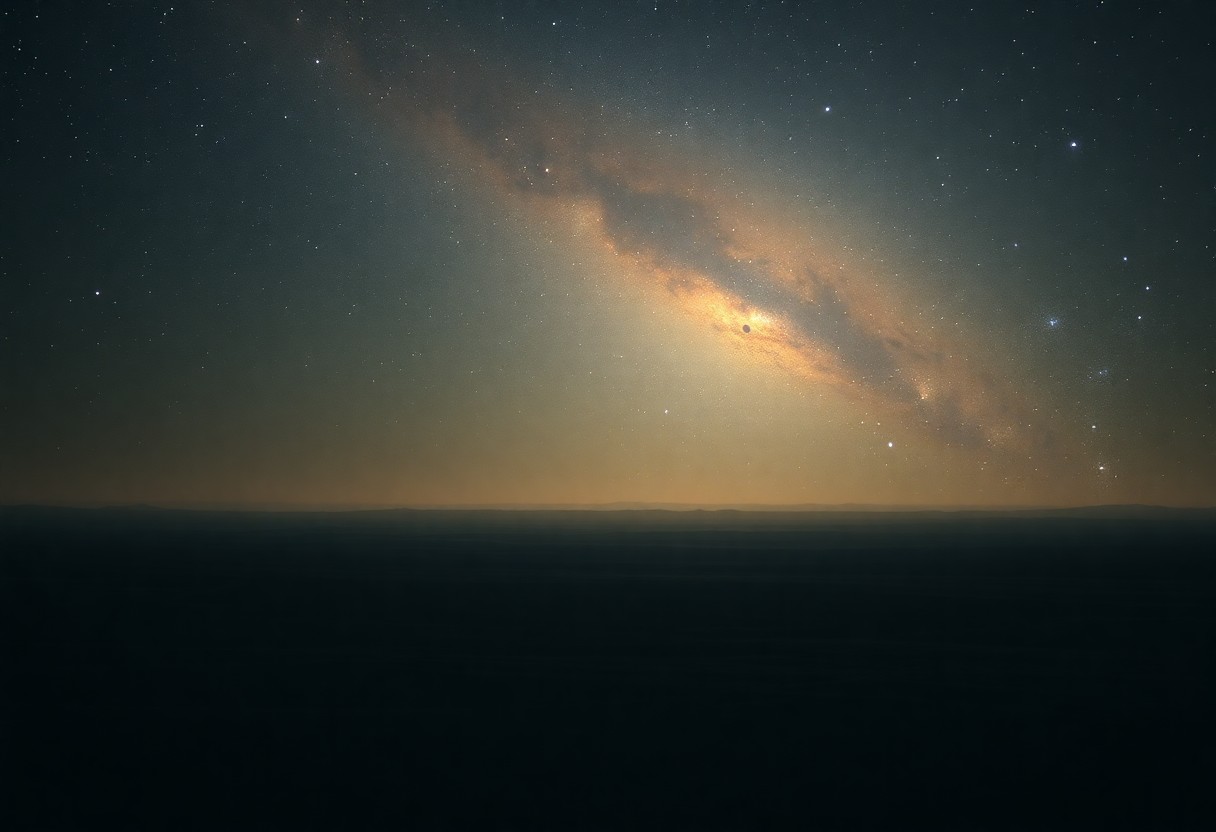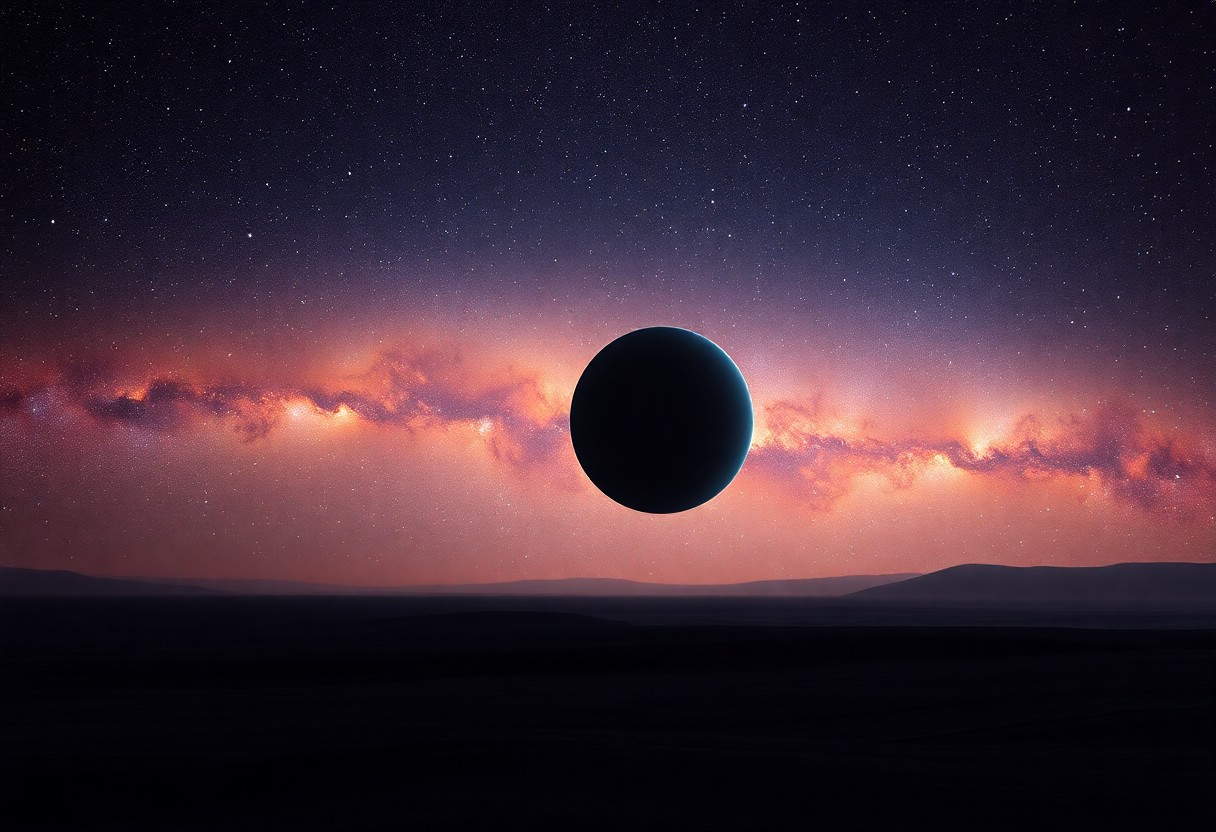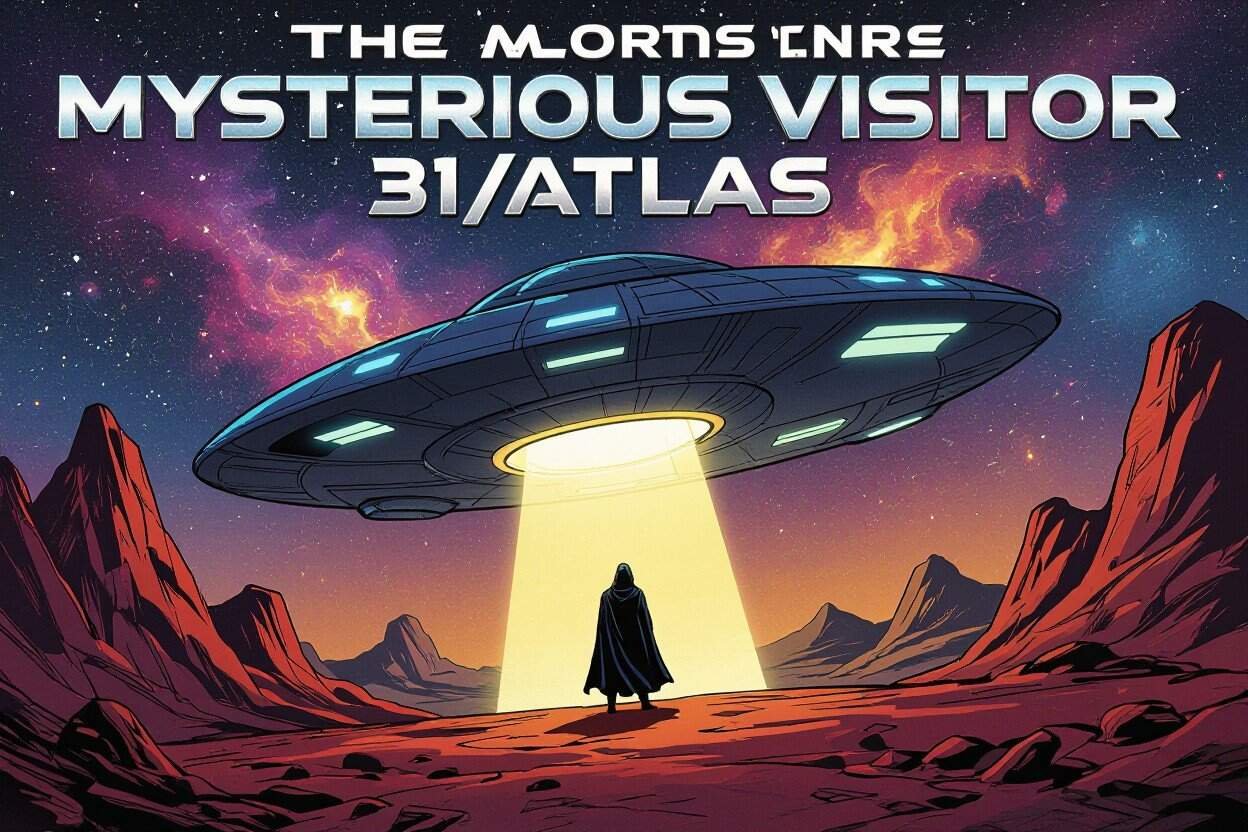
The Discovery That Stunned Astronomers
When Oumuamua first appeared in 2017, it immediately defied all expectations. This elongated object entered our solar system on a rare hyperbolic trajectory, signaling an origin beyond our sun. What left scientists astounded was its unexplained acceleration near the sun without any visible signs of propulsion or outgassing. This silent visitor’s behavior didn’t match any known comet or asteroid, prompting us to consider that we might be witnessing something entirely different—an advanced artifact, designed to navigate space with unparalleled precision.
Characteristics that Set Oumuamua Apart
Oumuamua’s unusual traits refuse to fit conventional categories. Its lack of ice, heat signatures, and comet tail, combined with a precise, non-random acceleration pattern, challenges our understanding of natural celestial objects. AI and quantum modeling reveal a pattern of micro-adjustments in velocity synchronized with its tumbling rotation—suggesting a responsive surface geometry akin to advanced light sail technology, far beyond current human engineering. This silent acceleration and programmed spin make Oumuamua stand out as more than just space debris.
Delving deeper, Oumuamua’s 7.3-hour rotation period—with less than 0.002% variance—and micro-rotations every 43.8 minutes indicate a sophisticated control system. These rotations create a scanning motion likely designed for optimal energy harvesting, thermal regulation, and environmental surveying. The patterned spin and trajectory corrections reveal active calibration, possibly for data transmission or reconnaissance, meaning this isn’t a passive drift through space but a deliberate, intelligent navigation. Such technology, if confirmed, would represent a leap in our understanding of interstellar objects and their potential origins.
The Gaia Mission and Its Stellar Mapping
The European Space Agency’s Gaia mission has created an unparalleled three-dimensional map of our galaxy, cataloging over 1.8 billion stars with extreme precision. This stellar dataset allows astronomers like you and me to trace the trajectories of objects such as Oumuamua with incredible accuracy. Using Gaia’s information, scientists pinpointed Oumuamua’s path backward, revealing a location within the local standard of rest where few gravitational disturbances occur. This mapping is vital for understanding the environments objects come from and challenges assumptions about natural ejection processes in deep space.
A Journey Through a Gravitational “Dead Zone”
Oumuamua’s origin lies in what can only be described as a gravitational “dead zone”—a region devoid of binary stars, massive stellar winds, supernovae, or star clusters that normally catapult objects at interstellar speeds. The absence of these dynamic processes makes it highly unlikely for any natural body to launch successfully from this quiet neighborhood. For you observing this, it raises a profound anomaly: this silent zone, meant to keep objects bound, appears to be the spot Oumuamua chose—or was placed—to begin its journey.
Digging deeper into this dead zone, you find a space remarkably free from gravitational forces intense enough to propel anything beyond its home system. No binaries within 10 light years to sling shots, no recent supernovae blasts to push debris outward, and no massive stars with stellar winds capable of escape velocities. This peaceful environment is an unlikely birthplace for a fast-moving interstellar traveler. Instead, it suggests something deliberately launched where it could avoid detection and blend into the cosmic background. That Oumuamua emerged from this region adds weight to the idea of an intentionally concealed launch, not the chaotic flinging expected from natural cosmic events. Such insight forces us to reconsider not only Oumuamua’s journey but its very nature and origin.

The Nature of Gravitational Dead Zones
Gravitational dead zones are areas in space where the typical forces that fling debris into interstellar journeys are virtually absent. These quiet regions lack binary stars, supernova remnants, or massive stellar winds that could accelerate objects to escape velocities. When you consider Oumuamua’s origin precisely mapped by ESA’s Gaia mission, it emerges from such a dead zone—a serene stellar neighborhood where natural mechanisms for launching interstellar objects simply don’t exist.
Absence of Ejection Mechanisms
The region behind Oumuamua’s departure point poses a profound enigma because it contains no known natural ejection mechanisms. No binary stars within 10 light years, no massive stars, no supernova events, and no dynamic star clusters can provide the gravitational forces necessary to eject objects at the speeds we observed. This absence makes its origin almost impossible to explain by conventional astrophysics.
This lack of natural accelerators is profoundly significant. You’d expect to find complex gravitational interactions or explosive events in any region producing fast-moving interstellar objects, yet here there is none. Without these forces, Oumuamua’s journey demands an alternative explanation, potentially pointing to deliberate propulsion or artificial launch. The fact that this “dead zone” exists within the local standard of rest challenges our understanding of how objects achieve interstellar travel, hinting at technology or phenomena far beyond known cosmic processes.
The Lack of Visible Propulsion
You might expect an object speeding through the solar system to exhibit clear signs of propulsion—like exhaust, heat, or a cometary tail—but Oumuamua defied these expectations. Despite its acceleration near the sun, no outgassing or vapor trails were ever observed. This absence of visible propulsion makes its movement highly unusual, especially as natural bodies rely on such mechanisms. This silent, invisible acceleration suggests something either incredibly advanced or entirely unknown at work, challenging what you think about cosmic travelers passing through our neighborhood.
The Role of Quantum Enhanced Optical Modeling
Using quantum enhanced optical modeling, researchers uncovered astonishing new insights into Oumuamua’s trajectory. This cutting-edge method revealed a mathematically precise acceleration pattern counterbalancing the object’s rotation. Such responsive surface geometry implies a surface capable of dynamically adjusting reflectivity—technology that is beyond current human engineering. This modeling supports the idea of an advanced light sail propulsion system, silently harnessing stellar radiation to maintain course, shaking up traditional ideas about natural interstellar objects.
Expanding on quantum enhanced optical modeling, it is remarkable how this technique exposed microscopic variations in Oumuamua’s acceleration tied directly to its orientation relative to the sun. These micro-adjustments are perfectly aligned with theoretical models of light sails that can maintain stability despite tumbling—something no natural object can manage. This precision hints at an intelligently designed system, passively utilizing solar radiation for propulsion without visible exhaust, fundamentally altering our understanding of propulsion mechanics in space. While this technology is still theoretical on Earth, the data suggests Oumuamua may be a real-life example, which is both exciting and unsettling.
The Significance of Consistent Rotational Cycles
The observed 7.3-hour rotation cycle of Oumuamua with less than 0.002% variance reveals an extraordinary level of precision for an interstellar object. Such consistency defies natural expectations, as tumbling space debris typically shows chaotic rotation over time. This stable cycle suggests deliberate engineering, possibly to optimize energy absorption or sensor functionality while traveling through space. Understanding this pattern challenges conventional astrophysics and hints at technology far beyond current human capabilities, signaling that Oumuamua’s behavior is not random but controlled and purposeful.
The Implications of Micro-Rotational Adjustments
The micro-rotational adjustments occurring every 43.8 minutes point to a responsive system that dynamically exposes different surface areas to solar radiation. This sophisticated maneuvering could indicate an advanced light sail design enabling sustained propulsion and precise orientation. This means Oumuamua wasn’t passively drifting but actively controlling its trajectory, defying typical physical constraints and natural forces in space. These adjustments could enable energy harvesting, navigation, or environmental scanning, reinforcing the idea that this object embodies technology far beyond known natural phenomena.
The detailed pattern of micro-rotational shifts suggests that Oumuamua can fine-tune its exposure to sunlight, a capability that would require responsive surface geometry and dynamic reflectivity. This feature enables it to maintain stability and propulsion without any visible exhaust, making it virtually undetectable and dangerously efficient as a silent traveler through interstellar space. This implies a design that maximizes energy intake while performing systematic surveys—functions that could be used for benign exploration or more unsettling purposes. The technology inferred here is unlike anything naturally observed, pushing the boundaries of what we consider possible in spacecraft engineering.
Analyzing the Pattern of Its Launchpad
Tracing Oumuamua’s trajectory back through GAIA’s stellar map reveals something startling: it originated from a gravitational dead zone, a region devoid of binaries, supernovae, or massive stars—none of the natural mechanisms needed to eject an object at interstellar speeds. This silent, almost lifeless neighborhood makes no astronomical sense as a launch site. It’s as if Oumuamua was deliberately placed there, choosing a quiet, undisturbed corner of our galaxy to begin its journey, minimizing any chance of detection or interference. This pattern challenges what we know about natural celestial phenomena.
Speculations on Purpose and Design
Oumuamua’s controlled acceleration and rotational patterns suggest a sophisticated design, not random chaos. It’s unlike anything natural, showing signs of responsive surface geometry that dynamically interacts with solar radiation. This technology hints at an advanced, silent propulsion system, possibly a light sail, that enables precise self-correction during its tumble. These features imply that the object might be an artificial probe, intentionally launched from a dead zone to drift silently across space, actively calibrating itself for energy collection or reconnaissance purposes.
Reflecting deeper on these findings, the implications are both fascinating and unsettling. The patterned spin, with consistent 7.3-hour rotations and micro-adjustments every 43.8 minutes, aligns with theoretical spacecraft behavior designed for maximum energy harvesting and environmental scanning. Such precision points to advanced engineering well beyond current human capabilities. If Oumuamua was indeed broadcasting or gathering data as it passed, this suggests the presence of a highly sophisticated intelligence observing our solar system silently. This raises profound questions about who launched it, why from a dead zone, and what it might be seeking, inviting us to rethink the boundaries of natural versus artificial in the cosmos.
Implications of Light Sail Technology
The evidence pointing to advanced light sail technology on Oumuamua changes the landscape of what we consider possible in interstellar travel. This technology, capable of dynamically adjusting its reflective surface to harness solar radiation for propulsion, suggests a level of engineering far beyond our current capabilities. If true, it implies that Oumuamua was not merely a passive object but a purpose-built probe designed for silent, efficient movement across the stars. This challenges traditional astrophysics and opens the door to detecting other such engineered artifacts in space.
The Challenge of Proving Extraterrestrial Origin
Proving that Oumuamua is of extraterrestrial design is an immense challenge. Despite advanced quantum and AI analyses revealing impossible natural behaviors—patterned acceleration and controlled rotation without visible propulsion—we cannot yet offer direct physical evidence. The absence of exhaust or mass ejection and its origin from a gravitational dead zone further complicate the case. We must weigh these findings against our understanding of physics, realizing that confirming alien technology requires evidence beyond trajectory anomalies and rotation patterns.
It’s important to recognize the dangerous implications of concluding an alien origin without conclusive proof: it could cause premature panic or misinformation. However, there’s a positive side—accepting the possibility encourages expanding our scientific methods and technologies to detect and study such phenomena rigorously. The subtle yet deliberate adjustments in Oumuamua’s acceleration and rotation signal a design sophistication that defies accidental explanations. The absence of natural ejection mechanisms combined with its trajectory from a silent stellar neighborhood leaves us with more questions about the universe’s inhabitants than answers. This uncertainty forces us to consider a future where interstellar probes might silently pass through, waiting for us to notice.

How Oumuamua Shapes Astrobiological Perspectives
Oumuamua challenges our traditional understanding of life and intelligence in the cosmos. Its precise rotation, lack of natural propulsion, and origin from a gravitational “dead zone” suggest it may be an artificial probe, forcing us to reconsider the likelihood of advanced extraterrestrial technologies. This shifts astrobiology from purely searching for microbial life to contemplating intelligent artifacts deliberately designed to explore or monitor star systems, expanding the scope of what we define as signs of life beyond known biological signatures.
The Future of Interstellar Exploration
The discovery of Oumuamua’s sophisticated trajectory and possible light sail technology points toward new methods for exploring space beyond our solar system. Understanding these passive propulsion techniques could revolutionize how humanity approaches deep space travel, enabling silent and energy-efficient probes. However, this potential comes with significant risks, as the intent behind such technology remains unknown, raising questions about whether future encounters might pose threats as well as opportunities.
Looking ahead, interstellar exploration stands on the brink of transformation. The data revealing Oumuamua’s dynamic surface and adaptive acceleration hints at the existence of responsive materials that can manipulate stellar radiation without active fuel consumption, representing a leap beyond current propulsion research. While this promises vast benefits like sustainable long-distance travel and enhanced energy harvesting, it also highlights the dangers of encountering technology far superior to our own, possibly with unknown motives. As the scientific community pushes forward, embracing these lessons from Oumuamua could unlock the pathway to the stars while demanding heightened vigilance and ethical foresight.
Final Words
Tracing Oumuamua’s origin to a gravitational dead zone challenges everything we expect about how objects travel between stars. You see, no natural forces in that quiet region could explain its launch or precise trajectory. This silent birthplace suggests intentional design, raising profound questions about its true purpose. As you consider these findings, you will come to realize how Oumuamua’s story forces us to rethink both natural cosmic processes and the possibility of advanced technologies silently navigating our galaxy.



My brother recommended I might like this web site He was totally right This post actually made my day You cannt imagine just how much time I had spent for this information Thanks
Always look forward to your posts. They’re consistently excellent.
Somebody essentially lend a hand to make significantly articles I’d state. That is the very first time I frequented your website page and up to now? I surprised with the research you made to make this actual submit amazing. Wonderful task!
Amazing blog! Is your theme custom made or did you
download it from somewhere? A design like yours with a few
simple tweeks would really make my blog stand out. Please let
me know where you got your design. Thanks a lot https://tichmarifa.blogspot.com/2025/08/blog-post.html